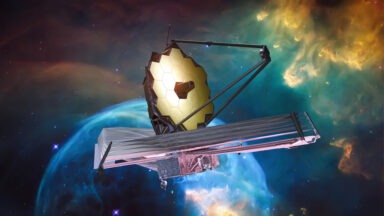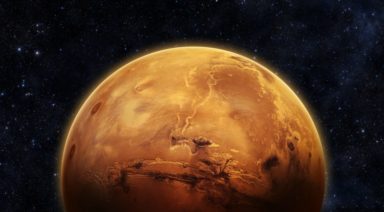Is This a Solution to the Fermi Paradox?

A new theory has been devised on why aliens have never visited Earth, that we know of, as a possible resolution to the Fermi paradox.
Many who are curious about the existence of ETs have heard about the “Fermi paradox,” named after famous astrophysicist Enrico Fermi.
The story goes that in a lunchtime conversation with other astrophysicists who reasoned that, given the vast size and age of the universe it stands to reason, there must be other intelligent life out there, to which Fermi asked, “where is everybody?”
For decades people have tried to answer that question if there are so many possible ET civilizations, where are they? Now, astrobiologists Michael Wong, of the Carnegie Institution for Science, and Stuart Bartlett, of the California Institute of Technology offer their hypothesis, and it’s a bit dark.
Using studies of the growth of cities on Earth, they argue that civilizations grow infinitely but in a finite time. This infinite growth of population and overuse of energy will eventually lead to the death of the civilization or possibly saving themselves.
“We propose a new resolution to the Fermi paradox: civilizations either collapse from burnout or redirect themselves to prioritizing homeostasis, a state where cosmic expansion is no longer a goal, making them difficult to detect remotely.”
So, they argue, if an advanced civilization in space has grown like cities on Earth, they have likely died out. Or if they recognized their dire situation early enough, they may have shifted priorities from interplanetary exploration to planetary survival through homeostasis.
The authors note that this is just a hypothesis and is intended to “provoke discussion, introspection and future work.” Meanwhile, a possible new target in the search for extraterrestrial life has come out of the University of Copenhagen and shows nearly half of sun-sized stars are binary.
Since Earth, the only known planet with intelligent life orbits a single star the sun astronomers have looked for Earth-like planets with a single star in their search for extraterrestrial life. Now professor Jes Kristian Jørgensen, who lead the study, says planetary systems that form around binary stars do so in a way that is much different than around single stars, saying in a statement,
“The result is exciting since the search for extraterrestrial life will be equipped with several new, extremely powerful instruments within the coming years. This enhances the significance of understanding how planets are formed around different types of stars. Such results may pinpoint places which would be especially interesting to probe for the existence of life,”
The discovery was made using the Alma telescopes in Chile of a young binary star about 1,000 lightyears from Earth. The researchers were able to capture the quote, “a snapshot in time of the formation of a binary system” for two nights in 2019. The researchers note that the system is too young for planets to have formed but hope to observe the formation of planetary systems.
“As there is some evidence that planet-formation has already started during the deeply embedded stages studied here, these effects may all be important components for determining the physical and chemical characteristics of the emerging planets.”
And perhaps there we will see evidence of intelligent life in outer space.
Will NASA's New Telescope Discover ET Life?

The spectacular first images from the James Webb Space Telescope are finally here and they do not disappoint.
After years of planning, construction, delays, and a cost of about $10 billion, we finally have the first images from the James Webb Space Telescope. Launched in December of 2021, the JWST is the largest and most powerful space telescope ever to be put in space.
Astronomers have waited a lifetime to see with such amazing clarity deep into space. JWST does this by operating in the infrared spectrum; it “sees” light that is outside the visible spectrum of our naked eye and previous telescopes like Hubble.
NASA released photos of the first five targets noting, “These first images from the world’s largest and most powerful space telescope demonstrate Webb at its full power, ready to begin its mission to unfold the infrared universe.”
We caught up with astronomer and Gaia News contributor Marc D’Antonio on the road in Arizona, to break down the images.
“I saw these images and the release of all five different images represent a different aspect of what this telescope can do — absolutely astonishing to me — from galaxies to gas clouds, this telescope hands down, has the ability to show us so much that we don’t understand.”


































